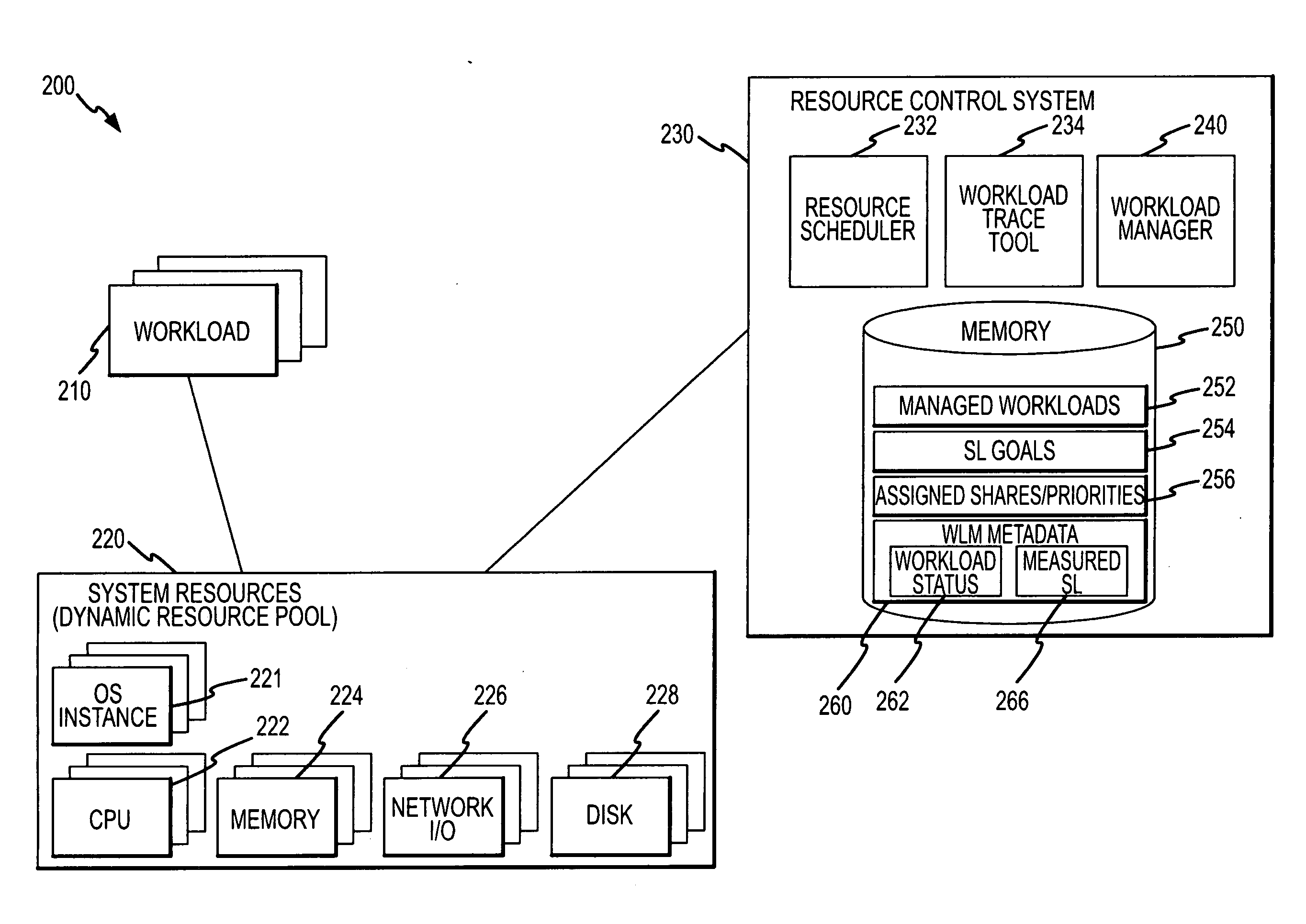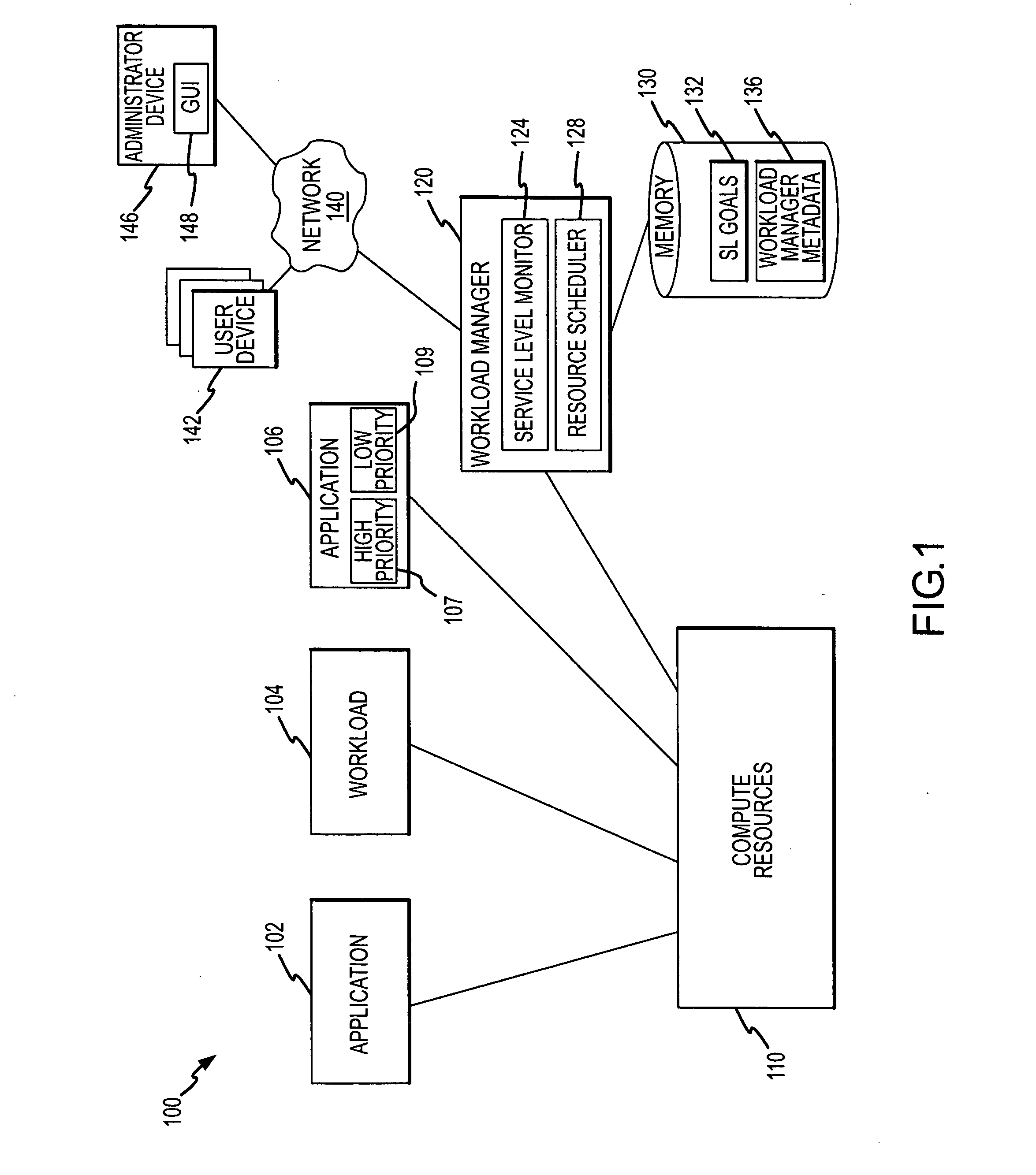Computer resource management for workloads or applications based on service level objectives
a technology of workloads and objectives, applied in the direction of multi-programming arrangements, program control, instruments, etc., can solve the problems of varying the amount of cpu time delivered to a project with a given number of shares, workloads that cannot be guaranteed predictable service levels, and solaris does not have the facilities for managing resources across servers, etc., to achieve efficient allocation of compute resources and effective management or allocation of compute resources
- Summary
- Abstract
- Description
- Claims
- Application Information
AI Technical Summary
Benefits of technology
Problems solved by technology
Method used
Image
Examples
Embodiment Construction
[0016] The present invention is directed to methods and systems for providing improved management and allocation of computer / network system resources to “workloads” to more fully utilize the compute resources. Significantly, the methods and systems described herein manage the resources based on service level objectives or goals rather than by setting a fixed priority or user CPU share to meet peak needs of a workload. The term “workload” may be a single application running on a set of compute resources or a resource pool or may include more than one application or be a process, task, or other grouping for which it is useful to assign a service level objective or goal. In a Solaris-based embodiment, for example, a workload may be a Solaris project or zone that is named in memory such as in a workload manager repository or the like. The workload management systems and methods of the invention allow a user or administrator to set service level goals for one or more workloads on one or ...
PUM
 Login to View More
Login to View More Abstract
Description
Claims
Application Information
 Login to View More
Login to View More - R&D
- Intellectual Property
- Life Sciences
- Materials
- Tech Scout
- Unparalleled Data Quality
- Higher Quality Content
- 60% Fewer Hallucinations
Browse by: Latest US Patents, China's latest patents, Technical Efficacy Thesaurus, Application Domain, Technology Topic, Popular Technical Reports.
© 2025 PatSnap. All rights reserved.Legal|Privacy policy|Modern Slavery Act Transparency Statement|Sitemap|About US| Contact US: help@patsnap.com



